How to Become a Real Food, Natural Homemaker {Plus 2 recipes}
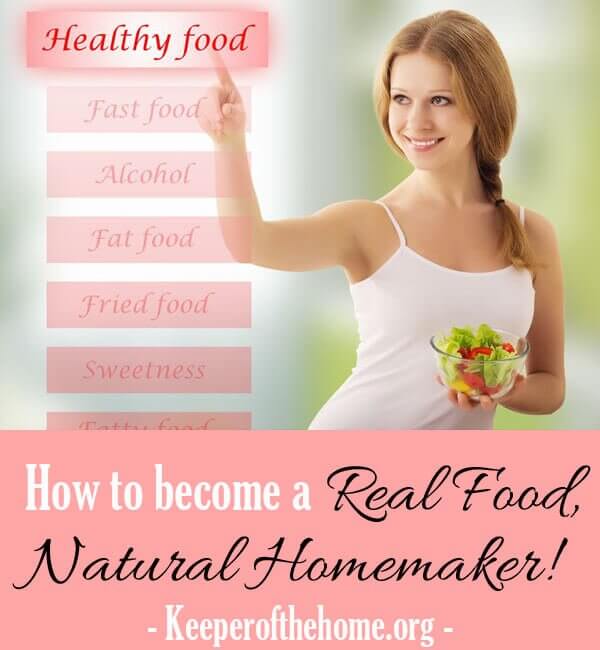
By Jami Balmet, Community Manager
When I was first discovering what it means to eat healthy – I mean, really healthy – none of this tofu, low-fat junk – I felt like I was in over my head. How had I lived my whole life and didn’t know all of this stuff?
I felt like I was learning how to cook, run my kitchen, and be a homemaker all over again. But now I was doing it with my twin boys crawling around my feet, trying to put everything in sight into their mouths.
Ugh. I felt overwhelmed and it seemed so hard to know where to begin. Many “natural” homemakers seemed so far along in their real food, natural lifestyle that it was hard to relate and learn from them – they were just way to far over my head.
Or, I ran into the natural women who “knew it all.” The ones who make you feel guilty for ordering a pizza because you just can’t find the time to cook dinner amidst all your other family responsibilities. You know – the ones who soak and roast their own nuts, buy only pasture-raised meats, buy only organic produce and products, who never buy a single canned or boxed food {even if it is organic}, grind their own wheat, make fresh bread daily, raise their own chickens and milk their own cows.
I think all of those things can be good – but most of the time we can’t do it all! Either our time or our budget (and usually both), don’t allow it. We need grace, Mamas. We need to give and accept grace that we can only do as much as we can.
After that? It’s in God’s hands and we should rest easy in that.
So what’s my goal? I want to give you some simple steps that you can fit into your everyday life and begin implementing today toward becoming a real food, natural homemaker without any of the guilt of not doing it all and all the grace of a loving sister. That’s why I wrote my new book, to help inspire and encourage other homemakers (get all the details below). Here are a few things I’ve learned.
3 Steps Toward a More Natural, Real Food Lifestyle {without the guilt}
1) Learn the Basics
This journey toward healthy eating is going to be a long one. It will feel like just as you start to master one thing, you learn about 10 more things you should be doing.
But don’t worry – and don’t let the guilt grip you – start out slowly and learn the basics of healthy eating and you can grow from there.
Pick up a copy of Trim Healthy Mama.
Yes, Trim Healthy Mama is a book about how to lose weight. But no other book has helped me to understand real food, healthy eating like this one!
It has over 350 pages just on what it means to eat healthy (plus hundreds of amazing recipes)!! It’s written by two sisters and they do a very good of sharing the strict real food side of things if you want to go all out but also the more grace-filled side of things if you just need to use your microwave today!
Pick up a copy of Nourishing Traditions.
This is also one hefty book – but don’t let that overwhelm you. Nourishing Traditions is full of practical knowledge on how the body works and absorbs nutrients and chemicals.
It also contains dozens of wonderful recipes. It’s a great foundational book of traditional, healthy eating!
Spend time reading good blogs.
Oh good – you’ve got this one down since you are reading this blog. Personally, I have learned so much from Stephanie here at Keeper of the Home and her fabulous team of writers.
While I don’t think you should blindly follow everything you read on the internet, blogs can be an excellent jumping off point. Read good natural blogs, and when you come across an interesting subject, go do some research yourself.
You will come across some amazing tutorials and recipes this way!
2) Stock your kitchen.
Once you start learning the basics, you will want to get in your kitchen and experiment! But when you are making food from scratch, you will need a lot more than a microwave. The more things you make from scratch, the more kitchen tools you will need – but this doesn’t have to break the bank. Here are a few of my favorite kitchen must haves:
Good Quality Blender – I personally own a Vitamix.
Slow-Cooker – I don’t know what I would do without my crock pot! I use it at least once a week.
Steamer – The fresh vegetables we have each night for dinner are almost always made in our steamer. It cooks them perfectly each time and is super easy to use.
Toaster Oven – Since we try and avoid using our microwave, our toaster oven works perfectly to heat things up quickly.
These are just four of my most essential kitchen tools. Find out how I use each of these items in my kitchen, more of my favorite kitchen must haves, and where to find the best prices on these appliances in chapter 3 of my brand new eCookbook, Real Food for the Real Homemaker.
3) Learn to cook from scratch
Some of the first lessons you will learn when converting to a whole foods kitchen is that cooking from scratch is usually the way to go. Boxed and prepared foods (even organic ones from the health food store) often contain unneccessary fillers, preservatives, chemicals and way too much sugar!
The fun part about learning to cook this way is that you will discover amazing new recipes for making kitchen staples right at home! So instead of buying unhealthy prepared food, you can freshly make these at home – and it’s usually cheaper, too!
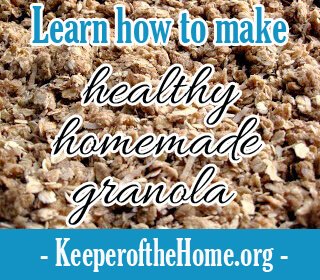
Homemade Granola
Ingredients
- 1 1/2 cups whole wheat flour
- 3 cups rolled oats
- 1 cup shredded coconut sweetened if desired
- 1 cup wheat germ
- 1 cup chopped walnuts soaked if desired
- 1/4 cup ground flax seed
- 2 Tbsp cinnamon
- 1/2 cup water
- 3/4 cup coconut oil
- 1/2 cup honey
- 1/4 cup maple syrup
- 2 tsp vanilla
- 1 tsp salt
Instructions
- Heat oven to 250 degrees.
- In a large bowl, mix flour, oats, coconut, wheat germ, walnuts, flax seed, and cinnamon.
- In a small saucepan over low heat, mix water, coconut oil, honey, molasses, vanilla, and salt; heat until coconut oil melts completely.
- Stir together; pour over dry ingredients and mix until very well combined.
- Pour mixture onto two greased cookie sheets (or jellyroll pans, a cookie sheet with sides) and bake 1 hour to 1.5 hours (depending whether you like your granola softer or crunchier), or until dry and golden brown. Watch after one hour to prevent burning.
Notes
Get my new book!
Pssst! Do you want to dive even deeper and learn what it means be a real food, natural homemaker? Until midnight tonight, you can get our brand new eBook for only $9.99! You will get budget-friendly recipes and resources for any cook on a whole foods journey! Get this 175+ PDF cookbook, the kindle version, printable recipe cards, a handy spreadsheet to help with meal planning and your grocery list all for under $10 (the price goes up to $12.95 tomorrow)! Real Food for the Real Homemaker – on sale today only!
Disclosure: This post contains affiliate links.


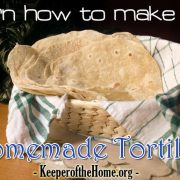

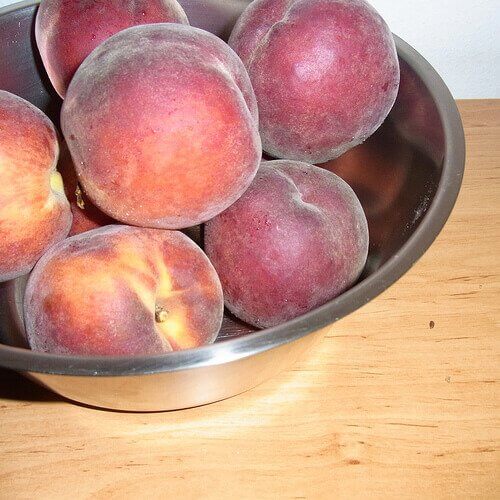
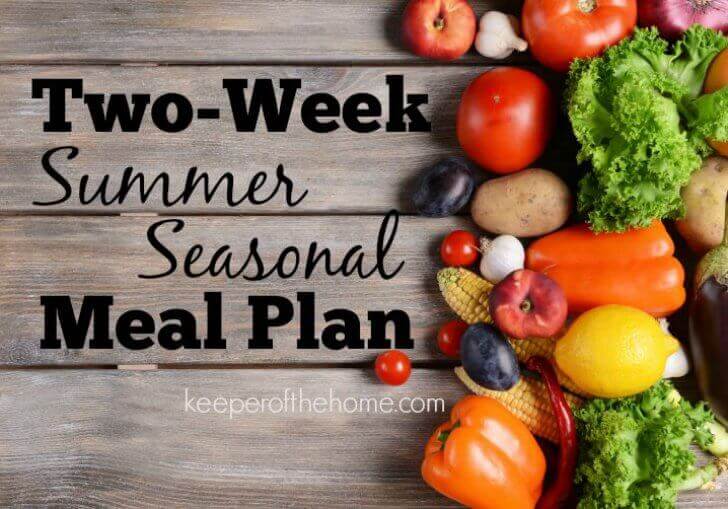
I’d love to know what tips you have for people who want to make this transition but are dealing with multiple food allergies. In our house we can’t do gluten, lactose, peanuts, or tree nuts. That eliminates roughly, ummm, 75% of the ‘natural/real food’ recipes and books I see! It makes it feel kind of impossible at times because at some point just plain meat and just pain veggies is going to get a tad bit boring!
You can try a paleo friendly diet!
I can’t do gluten, peanuts, tree nuts or excessive dairy either… very frustrating. I can tolerate kefir and sometimes yogurt from raw milk, however. Do you use raw milk? It’s much easier to digest. I have also had good success with raw goat’s milk, though it’s expensive. I roast garbanzo beans, or make bean dips. I make some baked goods with my own gluten free flour blends (buying the brown rice flour in bulk). I use brown rice pasta and experiment with a lot of eggs, different meats, homemade meat broths and veggies (I can tolerate some hard cheeses like fresh Parmesan pretty well, also). It’s just a “trial and error” around here! I know what you’re going through though, and I know you’ll find a way to pull this off! God bless!